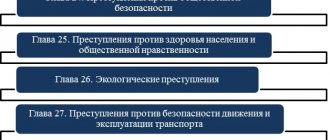What is meant by money laundering?
Money laundering is the transfer of funds from the shadow economy to the official and legal one. The person tries to give the income legitimacy in order to be able to dispose of it calmly.
Initially, money comes to a citizen through criminal means as a result of fraudulent schemes, robbery, drug and weapons trafficking, and theft. Then they are transferred from cash to non-cash form, exchanged for gold, real estate, securities and again transferred to non-cash form.
Types of legalization (laundering) of funds
There are hundreds of money laundering schemes. They are being improved every day, which makes it more difficult to investigate and prove a crime.
Let's look at examples of some of them:
- creation of shell companies to carry out transactions with large sums;
- falsification of primary documentation to substantiate the legality of the source of income obtained by criminal means;
- conducting transactions through companies owned by relatives;
- withdrawal of funds to offshore zones with preferential taxation.
Responsibility arises only when the money is acquired illegally.
If you are suspected of money laundering, it is advisable to immediately enlist the help of a qualified lawyer. He will help confirm the legality of sources of income and tell you how to prove the absence of a crime.
Signs of legalization of funds or other property
Income legalization is a complex process that involves many transactions. To qualify an act as a crime, it must have the following characteristics:
- legalization is carried out in order to hide traces of the origin of money obtained by criminal means;
- criminals create the appearance of legality in obtaining income;
- persons receiving illegal income try to hide;
- conditions are created for tax evasion and ensuring convenient legal access to funds.
To qualify a crime under Article 174 of the Criminal Code of the Russian Federation, the amount of damage caused is taken into account. Penalties are provided for the following offenses:
- simple;
- on a large scale – from RUB 1,000,000;
- in especially large amounts - from RUB 6,000,000.
Legalization (laundering) of money acquired by criminal means is detected in any, even targeted financial transaction or operation with money or other property.
Consequences of money laundering for the country and population
With such a negative phenomenon as money laundering, the following consequences may occur:
- the investment climate is deteriorating;
- public property is stolen;
- such a negative phenomenon as corruption is getting worse;
- economic standards are undermined;
- there is population migration due to economic destabilization;
- elections are falsified, deputies are bribed;
- the population is impoverished.
The most profitable criminal business is drug trafficking. Other types of criminal activities associated with money laundering include:
- human trafficking;
- VAT fraud schemes;
- weapon;
- smuggling.
To launder money, criminal groups invest in legal sectors of the economy, for example, in bars, restaurants, nightclubs, that is, in those establishments under the cover of which prostitution and drug trafficking flourish.
In 2021, criminal money is most often laundered through various bank transfer systems, real estate, transport, construction, etc.
Which entity commits the crime of money laundering?
A citizen is held accountable under Article 174 of the Criminal Code of the Russian Federation after reaching the age of 16 and acquiring full legal capacity.
Sanctions are imposed on the following persons:
- company executives;
- business founders;
- accomplices acting as an organized group or by prior conspiracy.
The crime is committed intentionally for personal gain.
Judicial practice shows that it is difficult to prove the legalization of income. Therefore, for effective protection, it is important to entrust your problem to an experienced lawyer. Our specialists are well versed in the peculiarities of the investigation and know the reasons for the low detection rate of these crimes. We help clients completely relieve themselves of responsibility.
How does the money laundering process work?
There are 3 stages of money laundering:
- Placement stage – criminals mix “dirty” money into legitimate accounts. Often the money is deposited into a bank account registered to an anonymous company or a professional intermediary. It is at this stage that a criminal scheme can be exposed, because the appearance of a large amount of money out of nowhere always arouses suspicion.
- Concealment stage – conducting transactions to hide the history of the origin of “dirty” money. For example, money is transferred between accounts or criminals buy expensive property with it.
- The integration stage is the return of money to the official economy and to its original owner. Criminals invest the “washed” money in legitimate businesses, and payments are made to fake accounts. Also dishonest at hand, cunning criminals often contribute to charity or appoint themselves directors with huge salaries.
Today, the UN, governments of various countries, as well as non-profit organizations have joined the fight against such a phenomenon as money laundering.
How are money laundering scams exposed?
Let's look at this process using an example: she allegedly transported goods to another city for, who allegedly bought it.
All the documents were completed, the directors of both companies put their signatures and seals on them so that everything was clean. But when the prosecutor’s office calls them in for questioning and asks “What vehicles were used to transport the goods?”, then a mistake is discovered.
Both directors name what specific vehicle the goods were transported by; tax officials, meanwhile, check this information by making a request to the owner of the vehicle or the company that owns the vehicle. It turns out that on that day the car was in a completely different city.
Regulatory authorities become part of the process
It seems that now there will be more cases of involving government bodies - Rosfinmonitoring, prosecutors, tax and customs authorities - in the consideration of cases on the initiative of the court. Since the Supreme Court has indicated the need for courts to comply with legal requirements aimed at combating illegal financial transactions, judges will take into account the explanations of a higher authority. And if the judge has any doubts about the “normality” of the transactions or claims in respect of which the dispute is being considered, he will involve the relevant regulatory authority as a participant in the trial. Although it is still difficult to imagine how vigorously the courts will begin to check the circumstances regarding the possible use of the judicial procedure for resolving disputes for the purpose of legalizing income received in violation of the law.
It is expected that regulatory authorities will also take an active position in monitoring individual entities and will take measures to enter into the legal process. After all, participants in the process are endowed with broad rights: to participate in the examination of evidence, ask questions, make motions, present arguments, object to motions, arguments of other persons, etc. In particular, government agencies involved in the case have the right to appeal judicial acts. This means that they have a real and effective way to identify and prevent the implementation of “suspicious” transactions.
Money laundering methods
Individuals often receive small income on which they do not pay tax. However, law enforcement agencies and the tax inspectorate pay attention only to the unreasonable appearance of an impressive fortune in an individual, since such money is always obtained illegally (robbery, robbery, fraud, etc.). Legally received funds can always be confirmed with appropriate documents. The fraudster’s goal is to obtain such documents using illegally obtained funds.
The most common methods of legalizing funds obtained by criminal means for an individual are the following:
- Officially register the funds as winnings at the casino.
- Transfer funds to offshore companies, and then legalize them as income from the acquisition of very profitable shares.
- Divide the capital into unattractive amounts and transfer them to the bank cards of many trusted persons.
Legal entities and officials who have the opportunity to “pocket” money from the organization’s budget often take the opportunity to enter into agreements with front organizations. Front organizations provide non-existent services and charge the required fee for the official. The operation is carried out officially with all necessary documents completed. Then, funds are transferred from the account of the front organization to the account of the official who ordered the laundering.
All of these schemes are well known and, to a greater or lesser extent, such illegal operations are monitored by law enforcement agencies. But due to the involvement of foreign banks and companies, it can be difficult to prove the guilt of the offender.
Money laundering through offshore companies
Offshores are special financial centers that attract capital through tax benefits.
Mostly representatives of medium and large businesses register in offshore areas.
For small entrepreneurs, registration and maintenance are expensive, so it is easier and cheaper for them to organize a business in their country of residence. Companies use offshore companies for one purpose – to reduce taxes.
Why are offshore companies popular among the elite and government authorities? Because:
- The process of registering a new offshore company is greatly simplified. The owner of the company does not have to “shine”.
- Non-residents of the country pay income tax at a reduced rate.
- State currency control of offshore companies is simply absent.
- The activities of offshore companies are confidential and are not disclosed to anyone.
It is through offshore companies that many politicians, as well as people in power, launder money.
The money laundering process can be as follows: the organizer opens an account in another country through an intermediary. Then he begins to transfer money to this account from various sources, including from his offshore company.
After some time, this money is transferred to a third country, where the source of these funds is no longer considered suspicious.
Money laundering through Bitcoins
Bitcoin (and other cryptocurrencies) are one of the methods of money laundering today.
Why? Because this payment system can be used to anonymously transfer money abroad. A simple scheme for laundering funds through Bitcoin is as follows: a certain company opens a Bitcoin account to receive money for services provided.
At the same time, the same company can buy goods from itself (fictitiously, of course), it will receive legal income from its business.
The client does not need to be identified using the Bitcoin protocol.
Also, a money laundering scheme through Bitcoin could be like this:
- The client registers in the system and creates a one-time Bitcoin account.
- Then he buys bitcoin through electronic payment systems - Qiwi, Yandex, etc.
- Next, the system transfers this money to a “clean” wallet.
Let's give another real example: members of an illegal group recruited people from Ukraine and sent them to work in Russia.
People lived there in rented apartments, their task was to accept cash from group members and then transfer it into bitcoins.
Money was legalized through cryptocurrencies, after which funds were transferred to rubles or dollars. This money was then redirected back to Ukraine, where it was distributed among the group members.
Money laundering is a popular scheme for the circulation of “dirty” money among criminals . By the way, the most high-profile cases of money laundering involve large financial corporations, as well as officials.
Money laundering through individual entrepreneurs
The simplest scheme used by private entrepreneurs is cashing out funds through an individual entrepreneur.
How it works? A certain businessman opens an individual entrepreneur, a one-day company, registers it not in his name, but in the name of someone else. Then he carries out large transactions, after which he closes the company so as not to arouse suspicion among the tax authorities.
Then he opens an individual entrepreneur again, but already registers it in the name of another person and carries out the same operations. This will continue until he launders all the illegal money.
What is the scheme of money laundering through individual entrepreneurs?
Sooner or later in the process of entrepreneurship, business owners are faced with a problem - how to get the money they earn? This issue is relevant mainly for legal entities, since individual entrepreneurs already have the right to dispose of the income received at their own discretion. Unlike entrepreneurs, the owners of an LLC cannot simply take funds from the cash register (or withdraw from the organization’s account) for personal needs. First, they will need to pay all required taxes, primarily income tax or personal income tax on dividends.
Consequently, in order to increase their wealth, give employees “black” salaries, finance “gray” transactions and carry out other prohibited actions, company managers resort to fraudulent schemes. Most of them were invented back in the 90s, many are no longer used today, and some still exist. Among them is withdrawal of money through an individual entrepreneur. In connection with the operation is the forgery of documents, the conclusion of worthless contracts and hidden (in some cases obvious) affiliation of responsible persons.
Responsibility
The article provides for punishment for carrying out such financial transactions - a fine of 120 thousand rubles or in the amount of wages for a period of up to one year. The same act, but on a large scale, is punishable by a fine of 200 thousand rubles or the amount of salary for a period of up to two years. Also, the convicted person can be sent to correctional labor or to a colony for up to two years with a fine of 50 thousand rubles.
Important! The measures are toughened if the crime was committed in conspiracy with other persons or when the accused used his official position. Anyone who commits a crime under these circumstances and on an especially large scale will go to prison for seven years and pay a fine of one million rubles.
Laundering methods
Attention ! The information is provided solely for informational purposes, the administration in no way approves of such actions, does not encourage their commission and informs about responsibility to the fullest extent of the law of the Russian Federation, namely Article 174.1 of the Criminal Code.
Legalization of funds obtained by criminal means occurs as follows :
- "Moldavian scheme" . Paradoxically, this method formally fits within the framework of the law, so with its help billions of rubles were transferred abroad. Two companies acting in the interests of one person enter into an agreement for services or the supply of goods. The Russian side deliberately violates the conditions. The foreign partner goes to court for a penalty. The writ of execution is transferred to the bailiff service, and they collect funds from an account in Russia to an account abroad. The translation is complete.
- Fictitious loan . Banks are used in this scheme. Top managers issue a fictitious loan to an employee in exchange for a bonus. The employee is told that the loan exists only on paper. Meanwhile, money goes abroad. The debt is subsequently deemed impossible to repay. The method also works with legal entities. The company takes out a loan and then goes bankrupt.
- "Mirror Deal" . Another formally legal tool. Laundering takes place on the exchange floor. A Russian company buys a block of shares for rubles, which a foreign company sells for foreign currency. They act in the same interests. The deal does not bring any benefit other than the transfer of capital abroad.
- Small shell companies . A person interested in legalizing income opens fictitious companies for different people. Multiple transfers are then made through their accounts to split the amount and reduce the ability to trace the funds.
- Cryptocurrencies . The advantage of this scheme is anonymity. In Russia, bitcoins are not recognized as a means of payment, but there are countries where cryptocurrencies are accepted on an equal basis with ordinary money, as well as schemes for cashing them out.
- Courier . An old and primitive method of withdrawing cash, which was popular in the past, but modern methods have pushed it into the background. Passengers at airports are searched so thoroughly that it has become almost impossible to carry large sums of money.
Stages of money laundering:
- placement - putting money into circulation, depositing it into a bank account;
- fragmentation - transfer to other institutions to hide the origin of funds;
- integration - the use of funds to acquire assets or entrepreneurship.
Read on our website:
Responsibility for concealing funds
Responsibility for manipulation of the securities market
Liability for fictitious bankruptcy






